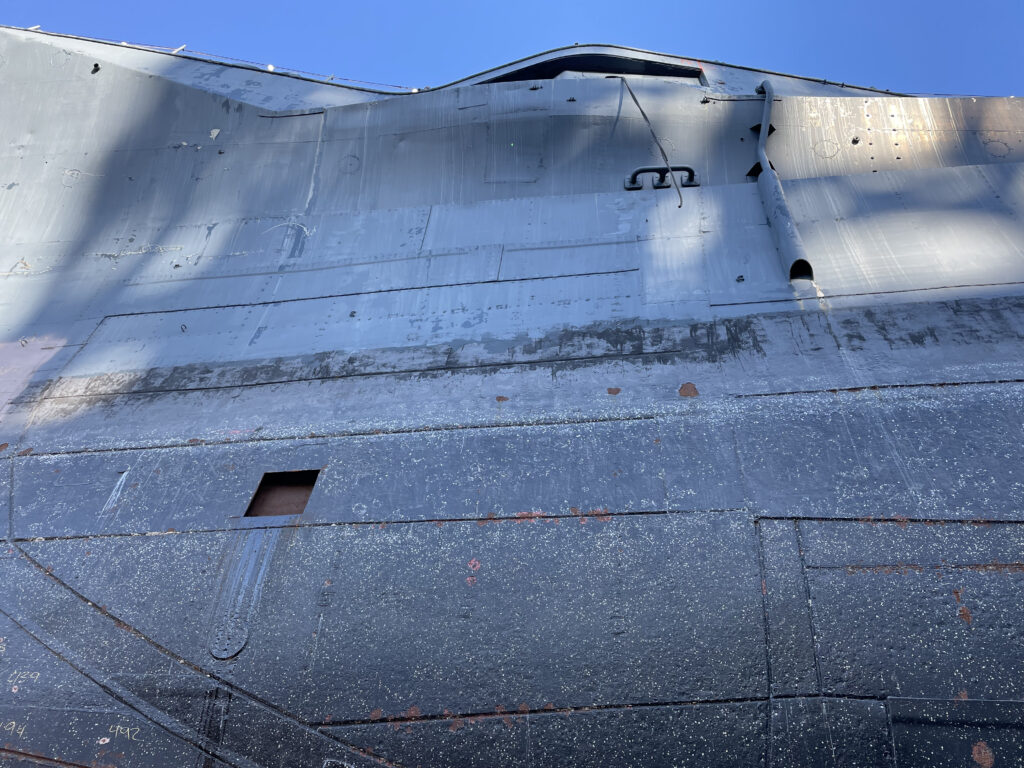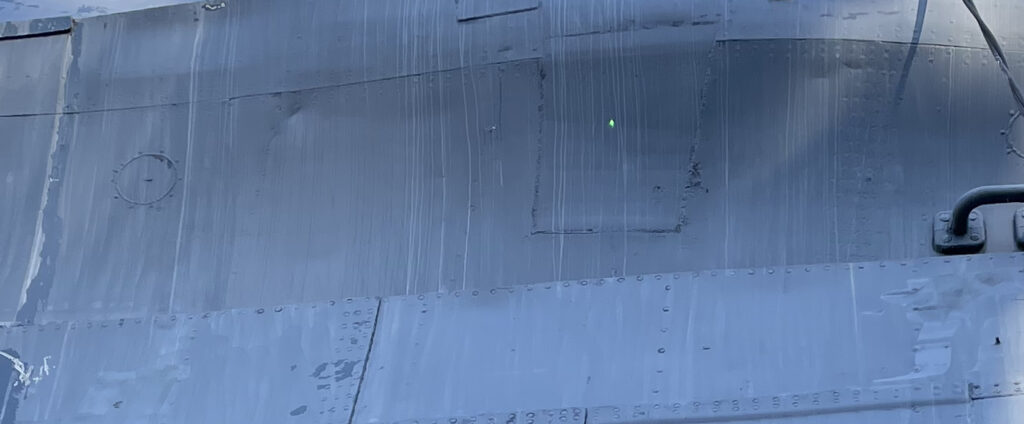For this year’s Memorial Day post, I’m going to lead off with a photo. Which is, frankly, not all that great because of the limitations of the situation, but it does serve to illustrate a story.
This is a photo I took when my brother, my nephew, and I went to see the Battleship Texas in dry dock.
If you click to embiggen, you’ll see a green dot. Here’s a cropped version, which might make it easier to see:
The green dot is from a laser pointer belonging to one of the tour guides. It shows where the Texas was patched.
Patched, you say?
On June 25, 1944, the Texas (along with “Arkansas, Nevada, four cruisers and eleven destroyers”) were dispatched to shell the port at Cherbourg, France. The intent was to lay down what I guess could be called “suppresive fire”, while VII Corps attacked the city.
The Germans, of course, shot back.
At 12:33, Texas was straddled by three German shells; five minutes later Texas returned fire with a continuous stream of two-gun salvos. The battleship continued her firing runs in spite of shell geysers blossoming about her and difficulty spotting the targets because of smoke…
At 13:16, a German 24-cm shell skidded across the top of her conning tower, sheared the top of the fire control periscope off (the periscope remains fell back into the conning tower and wounded the fire control officer, LTJG Paul Morigi and three others), hit the main support column of the navigation bridge and exploded. The explosion caused the deck of the pilot house above to be blown upwards approximately 4 ft (1.2 m), wrecked the interior of the pilot house, and wounded seven…
The warship herself continued to deliver her 14-inch shells in two-gun salvos and, in spite of damage and casualties, scored a direct hit that penetrated one of the heavily reinforced gun emplacements to destroy the gun inside at 13:35.
The Texas was actually hit by a second shell:
Wikipedia states the unexploded shell is “currently displayed aboard the ship”, which is not true since the ship is in dry dock. But I assume that the shell will return to display once the Texas gets settled and reopens to the public.
Of the eleven men who were injured by the shell that exploded, only one was killed: Christen Christensen. As best as I have been able to determine, he was the only combat casualty the Texas sustained during her entire service life (1914-1948).
I think it is especially interesting that the Texas only suffered one combat casualty, given what happened in the Pacific:
Quartermaster 3rd Class Christen Norman Christensen at Find a Grave.


What a great post.